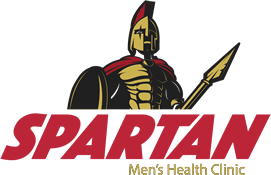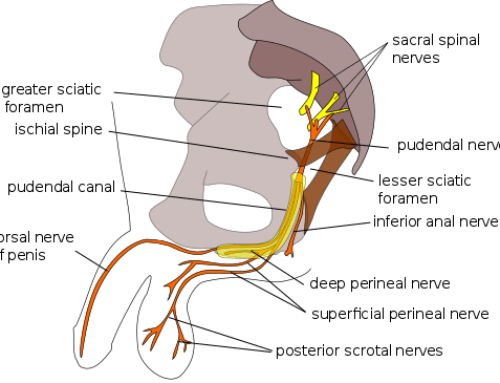 Approximately 30 million men suffer from erectile dysfunction in the United States. The numbers continue to increase each year as the population ages. Additionally, increasing numbers of men are diagnosed with prostate cancer and many of these men are impacted by the erectile dysfunction that arises as a result of prostate surgery. Unfortunately, many of these men are provided with only a handful of short-term treatment options. Typically, these erectile dysfunction treatments address blood flow to the penis and neglect the important role of nerve stimulation and the role of the pelvic muscles that are responsible for controlling and supporting erections. Moreover, nearly 30% of men suffering from ED are unable to take ED medications because of the side effects or other physical conditions. The fact is – – other options exist that provide longer-term solutions and can be used to prepare for and help recover from prostate cancer surgery.
Approximately 30 million men suffer from erectile dysfunction in the United States. The numbers continue to increase each year as the population ages. Additionally, increasing numbers of men are diagnosed with prostate cancer and many of these men are impacted by the erectile dysfunction that arises as a result of prostate surgery. Unfortunately, many of these men are provided with only a handful of short-term treatment options. Typically, these erectile dysfunction treatments address blood flow to the penis and neglect the important role of nerve stimulation and the role of the pelvic muscles that are responsible for controlling and supporting erections. Moreover, nearly 30% of men suffering from ED are unable to take ED medications because of the side effects or other physical conditions. The fact is – – other options exist that provide longer-term solutions and can be used to prepare for and help recover from prostate cancer surgery.
Traditional Management of Erectile Dysfunction
Most conventional forms of management of ED focus on enhancing penile blood flow. This can be achieved via a variety of pharmaceuticals– oral ED medications (Viagra, Levitra, Cialis, Stendra), penile urethral suppositories (M.U.S.E.–alprostadil) and penile injection therapy (Caverject, Edex, Bimix, Trimix, etc.). The vacuum suction device is a mechanical means of filling the penis up with blood, using a manual or battery-powered vacuum. Because of the negative pressure created the penis becomes engorged with blood. A constriction ring placed around the base of the penis maintains the erection. A disadvantage is that it does not cause rigidity of the roots of the penis and therefore causes a “pivoting” and unstable erection. The skin of the penis can become cool and dusky because of the constriction ring, which can be uncomfortable and impede ejaculation. As of July 1, 2015, this vacuum device and accompanying tension ring were statutorily excluded from Medicare coverage, and therefore not payable when billed to Medicare.
Despite the conventional emphasis on manipulating blood flow to the penis as a means of management of ED, it is important to understand that erections are more than simply a vascular (blood flow) event. Obtaining and maintaining an erection is a neuro-vascular-muscular event, depending upon properly functional sensory and motor nerves, spinal cord and brain function, arterial and venous blood supply to the penis and erectile smooth muscle within the penis and erectile skeletal muscles surrounding the roots of the penis. In addition to nerves, blood vessels and muscles being essential to the process, additional influencing factors are the hormonal environment and the psycho-emotional state of the individual. All elements are integrated and provide the physiological basis for an erection.
Deconstructing the Erection Process Into Its Components
Obtaining and maintaining a rigid erection results from a complex interplay of the following elements within the human body:
Nerves: When the penis is stimulated by touch, sensory nerves (dorsal nerve and perineal nerve, which join up to form the pudendal nerve) relay this information to spinal cord centers, which reflexively (via the cavernous nerves) relay the penile arteries to the message to increase blood flow, resulting in the penis engorging with blood. Tactile stimulation of the penis is also conveyed directly to the brain, enhancing this reflex response. Brain-induced erotic stimulation (visual cues, sounds, smells, touch, thoughts, memories, etc.) leads to further stimulation of the penis via cavernous nerve stimulation from excitatory pathways that descend from the brain. The bulbo-cavernosus reflex is an important reflex in terms of initiating and maintaining an erection (governed by sensory and motor branches of the pudendal nerve): with stimulation of the head of the penis, there is a reflex contraction of the pelvic floor muscles that causes more blood to be pushed into the penis.
Blood vessels: The cavernous nerve stimulation causes the arteries to the penis and within the vascular sinuses of the penis to substantially increase blood flow.
Smooth muscle: The erectile smooth muscle within the sinuses relaxes to allow filling of the sinuses with blood. Veins that drain the sinuses are occluded, trapping blood within the sinuses. This smooth muscle relaxation results in penile blood pressure becoming equal with systolic blood pressure and an engorged penis, plump but not rigid.
Skeletal muscle: There is no bone in the human penis as there is in many mammals, so nature has evolved a brilliant trick to generate erectile rigidity – – the use of readily available blood as a pressure medium under sky-high pressures. To achieve maximal penile rigidity, penile blood pressure must exceed systolic pressure by 100 mm of mercury. This means a penile blood pressure in excess of 220 mm must be achieved for the average man. The penis is the only place in the body where high blood pressure is desirable and necessary for proper function! A hypertensive penis is an erect penis and a happy penis! This explains why of all medications, blood pressure medications are most associated with ED.
How exactly does one achieve a hypertensive penis? This is where the “rigidity” muscles come into play, the ischiocavernosus and bulbocavernosus pelvic floor muscles, which surround the deep roots of the penis. In response to penile stimulation via the bulbocavernosus reflex, these muscles contract rhythmically, clamping venous outflow and squeezing the deep roots of the penis, pushing more blood into the erect penis, resulting in penile high blood pressure and full-fledged rigidity. Without the rigidity muscles, the penis would be engorged, but not rigid.
Hormones: Testosterone is “male rocket fuel.” A normal level of testosterone is important in terms of both sex drive and the facilitation of erections, although it is possible to obtain erections even in the face of low testosterone levels.
Psycho-emotional factors: Psychological and emotional status has a significant affect on erectile function. Mood, stress levels, interpersonal and relationship issues, etc. – – acting via the mind-body connection and the release of a “cocktail” of neurochemicals – – can influence erectile function for better or worse. Stress, for example, induces the adrenal glands to release a surge of adrenaline. Adrenaline constricts blood vessels, which has a negative effect on erections, the physiologic basis for the common occurrence of adrenaline-fueled performance anxiety.
The Down Side of Traditional Erectile Dysfunction Treatments
Medications undoubtedly can be very helpful for ED issues. However, they are expensive and are getting increasingly so, have side effects and there are a number of clinical situations in which they cannot be used. Other issues are the lack of spontaneity and their need for chronic use. Pills are easy to swallow, but many men find the thought of inserting a suppository in their urethras or putting a sharp needle in their penis less than satisfactory. Since the vacuum suction device is no longer covered by Medicare it has become a costly alternative. Furthermore, these treatments that deal only with the blood flow component of erections neglect the important contributions of nerve stimulation and the “rigidity” muscles.
New Treatment Options Beyond Drugs & Pumps
Another strategy is to focus on nerve stimulation and the rigidity muscles.
Vibratory genital stimulation has been used successfully for many years to enhance sexual response and induce climax in females, so why should it be any different for the male gender? Vibrators applied to the penis have traditionally been used for the treatment of spinal cord injured patients who cannot ejaculate, but would like to be able to father children. The use of vibratory genital stimulation has recently been expanded to ED, impaired rigidity, sexual dysfunction after radical prostatectomy and orgasmic/ejaculation issues.
Viberect, made by Reflexonic, Inc., is an FDA-certified hand-held penile vibratory stimulation device useful for triggering erection and ejaculation. It provides simultaneous stimulation of the genital nerves at both the dorsal (top) and ventral (bottom) of the penis. Penile vibratory stimulation stimulates the reflex between the penis and the spinal cord (pudendal-cavernosal reflex), resulting in tumescence (gradual filling of the penis with arterial blood). Penile vibratory stimulation of the head of the penis also contributes to erectile rigidity via inducing rhythmic contractions of the ischiocavernosus and bulbocavernosus via the bulbocavernosus reflex. By enhancing the bulbocavernosus reflex and triggering neural activity in the brain, spinal cord and peripheral nerves, it provokes erection and ultimately, ejaculation.
Pelvic floor muscle training – – which has also been used successfully for years in female – – is capable of optimizing function of the male “rigidity” pelvic floor muscles. The Pelvic Rx program (Adult Fitness Concepts, Inc.) is the go-to means of increasing pelvic floor muscle strength, tone, power, and endurance. It is a comprehensive, interactive, easy-to-use, medically sanctioned and FDA-registered follow-along exercise program that builds upon the foundational work of Dr. Arnold Kegel. It is the first program of its kind designed specifically to teach men how to perform the exercises. A clinical trial has demonstrated its effectiveness in fostering more rigid and durable erections, improved ejaculatory control and heightened orgasms. The Basic Training program strengthens the pelvic floor muscles with a series of progressive “Kegel” exercises, while the Complete Training program provides maximum opportunity for gains via resistance equipment.
Both the Viberect and the Pelvic Rx are unique sexual management tools – – approaches that go beyond the conventional blood flow enhancement treatments of ED – – that work on different aspects of the many facets of erectile physiology. Combining use of the Viberect and the Pelvic Rx is a partnership with great harmony and synergy that works on both the initiation of erection via Viberect’s ability to stimulate neurovascular cavernous reactivity as well as the maintenance of erection via Pelvic Rx’s ability to enhance venous occlusion, penile blood pressure and durability of erectile rigidity. Using the Viberect – Pelvic Rx combination does not in any way preclude using additional therapies such as the aforementioned medications and vacuum suction device. Both Viberect and Pelvic Rx are safe, non-invasive, sustainable and cost-effective with the Viberect costing $299 and the Pelvic Rx $99.
Preparing For and Recovering From Radical Prostatectomy
Having your prostate removed is an effective means of curing prostate cancer. Unfortunately, because of the prostate’s “precarious” location – – at the crossroads of the urinary and genital tracts, connected to the bladder on one end, the urethra on the other, touching upon the rectum, and nestled behind the pubic bone in a well-protected nook of the body – – it’s removal has the potential for causing unwanted and undesirable side effects.
Often times, urologists are so focused on removing the cancer (and saving the patient’s life) that not enough time is spent educating patients on what they can do to minimize the negative effects of the surgery. By strengthening the pelvic floor prior to and after surgery, and by employing nerve stimulation patients can greatly reduce and help reverse such effects.
It can take up to 2 years to recover maximal sexual function after radical prostatectomy. Post-prostatectomy ED seems to be on the basis of many factors including trauma to nerves, blood vessels, and muscular tissue, which can compromise sexual function and urinary control. The lack of tissue oxygenation resulting from the penis being flaccid for long periods of time can result in loss of erectile cylinder smooth muscle function, scarring and venous leakage.
Penile “rehab” is commonly employed to get the penile blood flowing and maintain tissue oxygenation and elasticity. Treatment modalities that have been used for rehab include oral medications, urethral suppositories, penile injections and the vacuum suction device.
The partnership of Viberect neural stimulation and Pelvic Rx pelvic muscle training are a welcome addition to the penile “rehab” regimen. Viberect stimulates the nerves that help induce an erection, while Pelvic Rx strengthens the underlying muscle system that powers, supports, and controls erectile rigidity. This combined treatment provides a safe, non-invasive, all-natural solution with no side effects, while not precluding use of the traditional ED management.
In addition, using the Viberect and Pelvic Rx together before and after prostate surgery may have a significant positive psychological impact on the patient. Once diagnosed with prostate cancer, men often have anywhere from four to eight weeks before surgery. This is often a very emotional and psychologically disruptive time, while they wait and worry about the pending surgery. The same is true during the recovery process. Using Pelvic Rx and Viberect helps patients take an active role in preparing for surgery as well as in the rehab process.
Andrew Siegel, MD
Urologist, Co-founder of The Pelvic Rx, and author of the highly acclaimed book, Male Pelvic Fitness: Optimizing Your Sexual and Urinary Health


Leave A Comment